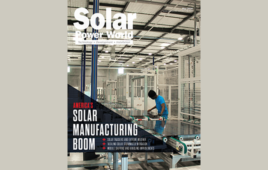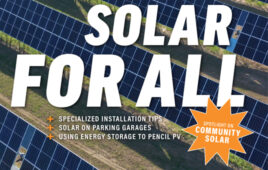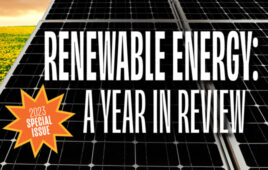Another kid from an ‘energy community’
Photovoltaic solar power, like other renewable energies, faces undue scrutiny when compared to fossil fuel sources like natural gas and coal. The latter garner reverence for job creation and sustaining communities, while the former is often politicized and brushed off due to intermittency concerns.
I grew up in the fossil fuel community of North Lima, Ohio. It’s a town you drive through without noticing, because it’s intersected by state routes and is just over seven square miles in size. Despite its small tract, North Lima was home to coal and strip mines. I spent many summer days in former strip mines just across the street from my house, hiking land that was shaped by the unnatural process of pulling precious metals from the ground.
After high school, I moved with my family to East Palestine. Even before the quiet agricultural community made global news, I witnessed hydraulic fracturing rigs being erected just down the road. Then, three months ago, I watched a toxic plume of flames erupt from a train that derailed mere miles from where I once lived, and where my family still resides.
The consequences of sourcing fuel with extractive practices that leaves the land hollow and unfit for many other developments are clear. Yet, a field of solar panels can still receive greater ire from a community than fossil fuels that have legitimately harmed the environment and its people. That experience is deeply frustrating — watching the solar industry strive to decarbonize our electrical grid contrasted against some of the greatest environmental disasters of our generation.
But recent solar legislation aims to right some of those wrongs. One of the many provisions in the Inflation Reduction Act incentivizes development of renewable projects in “energy communities,” or places like my hometown that have been impacted by fossil fuel plant closures. These tax incentives are meant to encourage developers to build solar arrays on former mine lands (one of the few construction projects still possible in these settings) that will benefit communities with tax revenue and job creation like they formerly sought from coal and fracking. For more on energy communities, read our in-depth story on page 15.
This issue of Solar Power World also covers topics related to large-scale solar development and the longtime maintenance and operations of those projects. The solar industry will be responsible for the exponential deployment of renewable energy in the coming years, and for keeping those assets running for decades to come. The case for solar is made stronger when companies consider the long-term effects the construction has on land and build management plans that integrate agricultural and regenerative practices to keep the ground underneath solar panels healthy and productive — contrasting even further against the harms of the fossil fuel industry.
To meet the country’s renewable energy goals, fields, rooftops and parking lots will be covered in solar panels, and they will provide careers and tax dollars for communities in an actual sustainable manner. My hope is a place like my hometown can be remediated by these efforts, both environmentally and economically. North Lima might be just another no-name town you pass by on the turnpike, but there is a path forward for communities like these through solar development.
Billy Ludt
Senior Editor
bludt@wtwhmedia.com
@SolarBillyL
@SolarPowerWorld





Tell Us What You Think!